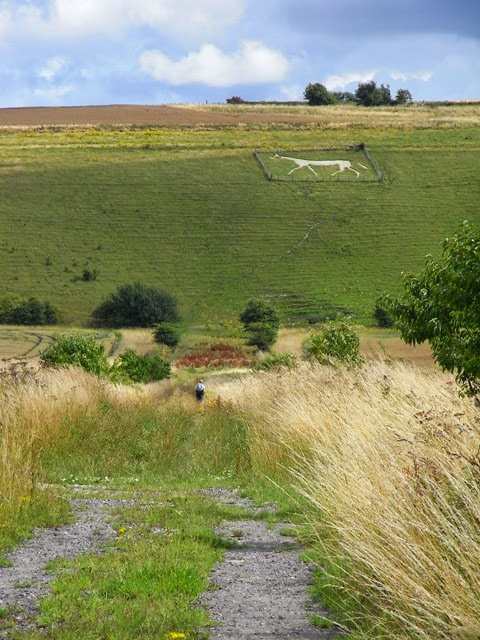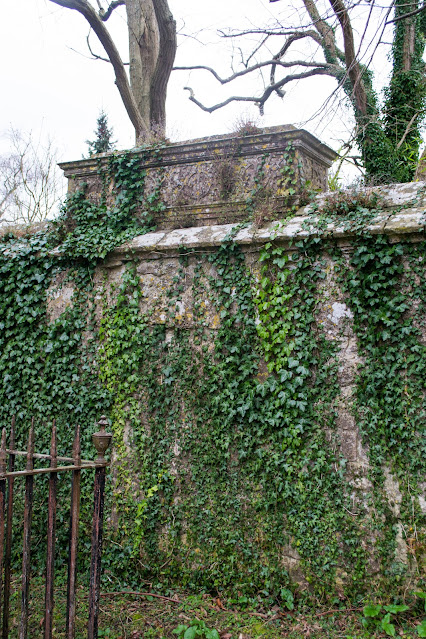W is for White Horse Trail
Here are today's local dialect words. Do you know what a want is? What is a wasset-man? Do you know what a weigh-jolt is? The answers are at the end of this post.
********************
The White Horse Trail is about 90 mile long and the route provides views of the eight remaining white horse hill figures that are cut into Wiltshire's chalk hillsides. I have listed them below in chronological order showing the newest one first, rather than the route you would take if you wanted to visit all of them.
The Devizes White Horse is the newest one and was cut in 1999 to celebrate the millennium. There was an earlier horse in Devizes which grew over and can no longer be seen. This one is an exact copy, but a mirror image, of the original, making it the only white horse to face to the right.
The Devizes White Horse is the newest one and was cut in 1999 to celebrate the millennium. There was an earlier horse in Devizes which grew over and can no longer be seen. This one is an exact copy, but a mirror image, of the original, making it the only white horse to face to the right.
 |
| Devizes White Horse © Copyright Maurice Pullin and licensed for reuse under this Creative Commons Licence |
The Pewsey White Horse was cut in 1937 to commemorate the coronation of King George VI. It replaces an earlier horse which had completely grown over.
 |
| Pewsey White Horse © Copyright Andrew Smith and licensed for reuse under this Creative Commons Licence |
The Broad Town White Horse was cut in 1864 by William Simmonds who owned the land it is on.
The Hackpen White Horse was cut in 1838, possibly to commemorate the coronation of Queen Victoria. |
| Broad Town White Horse © Copyright Brian Robert Marshall and licensed for reuse under this Creative Commons Licence |
 |
| Hackpen White Horse © Copyright Brian Robert Marshall and licensed for reuse under this Creative Commons Licence |
The Alton Barnes White Horse, cut in 1812, is the third largest of the white horses. It is on Milk Hill, which at 968 feet above sea level is the highest point in the county.
 |
| Alton Barnes White Horse |
The Marlborough White Horse was designed and cut by the boys from a local school, Mr Greasley's Academy, in 1804. It is the smallest of the Wiltshire White Horses.
 |
| Marlborough White Horse © Copyright Brian Robert Marshall and licensed for reuse under this Creative Commons Licence |
Cherhill White Horse was cut in 1780 and is the second largest of the white horses.
 |
| Cherhill White Horse |
Westbury White Horse is the oldest and largest of the white horses. It was cut in 1778 and covers an earlier example. It is thought that the first horse was cut on this site in 878 to celebrate the victory of King Alfred the Great at the Battle of Edington .
 |
| Westbury White Horse |
The images in this post which are identified as licenced for reuse under the Creative Commons Licence were found on www.geograph.org.uk.
Finishing up with the answers to the dialect words:
- want - a mole
- wasset-man - a scarecrow
- weigh-jolt - a seesaw
I'll be back on Monday with the letter X.



Fascinating; amazing some are so "old" yet look still good. This I would enjoy seeing!
ReplyDeletebetty
I didn't realize there were multiple white horses! I always thought that there was just one! How interesting!
ReplyDeleteThe Westbury horse is the one nearest to me so I know it well. It's huge! Years ago you were allowed to walk on it and we used to sit on the eye to eat our picnic 😊
Delete